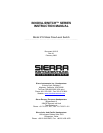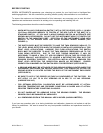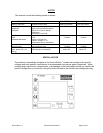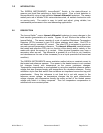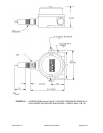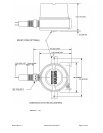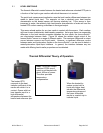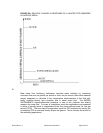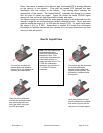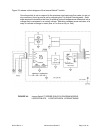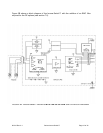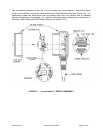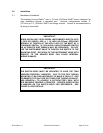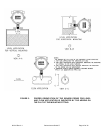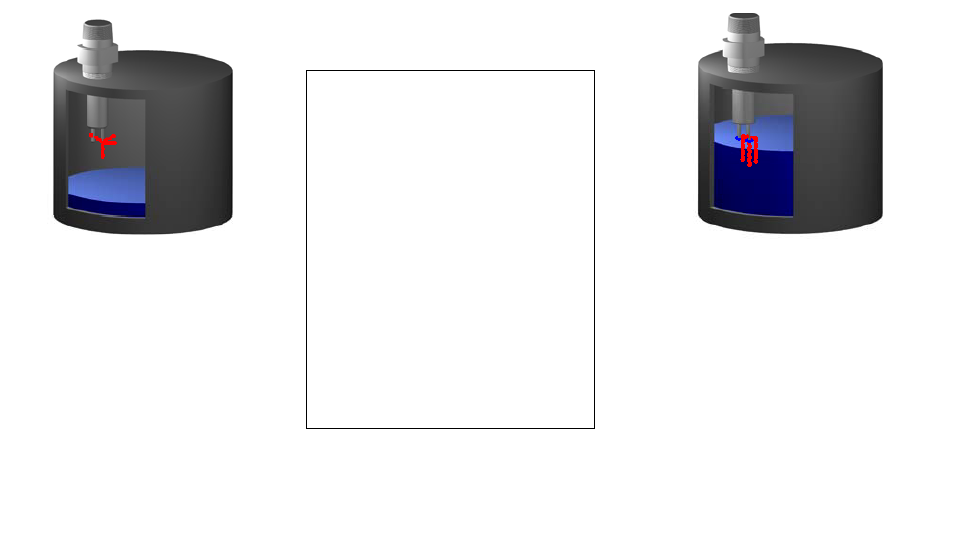
IM-215 Rev-A.1 Series Innova-Switch™ Page 8 of 42
2.1 LEVEL SWITCHING
The thermal differential created between the heated and reference unheated RTD pair is
a function of the liquid or gas medium with which the sensor is in contact.
The point level measurement application uses the heat transfer differences between two
media to detect liquid level. For example, air has a relatively poor heat transfer
characteristic so the heated sensor will become relatively hot. If the sensor is then
immersed in water, the relatively high heat transfer characteristics of water will cool the
heated RTD surface causing a decrease in the signal output.
This same rational applies for any two media in contact with the sensor. Each medium
will have its own characteristic heat transfer properties. As long as there is a reasonable
difference in the heat transfer properties between the two media, the Innova-Switch
™
can discriminate between them. Figure 2A shows the relative signal output of the
Innova-Switch
™
sensor to a range of different media. The maximum difference in output
occurs between vacuum and liquid metal. However, a significant difference occurs
between water and hydrocarbon liquids so the Innova-Switch
™
can be used to detect a
water/hydrocarbon liquid-liquid interface. In general, the interface between any two
media with differing heat transfer properties can be detected.
Thermal Differential Theory of Operation
Note: Probe tips contain
matched RTD’s one of
which is self-heated with
about 400mw of power.
The other provides
temperature
compensation.
The heated RTD
responds to the heat
transfer coefficient of the
media with which it is in
contact. Gases with low
heat transfer result in a
high differential
temperature between the
heated and reference tips.
When the heated tip
makes contact with a
liquid with higher heat
transfer the differential
temperature drops and
the lower differential
results in a switch trip to
indicate liquid.



